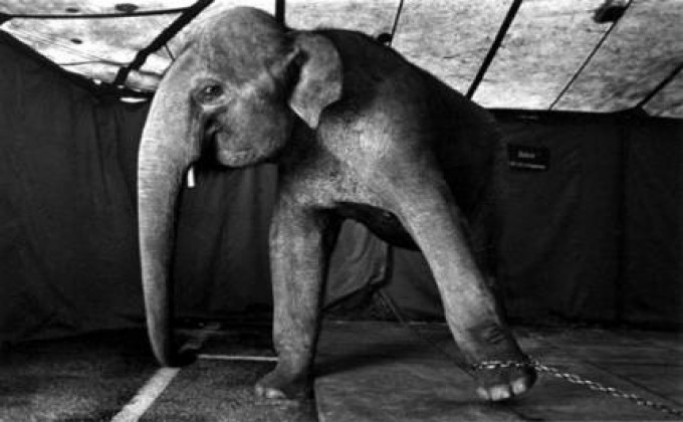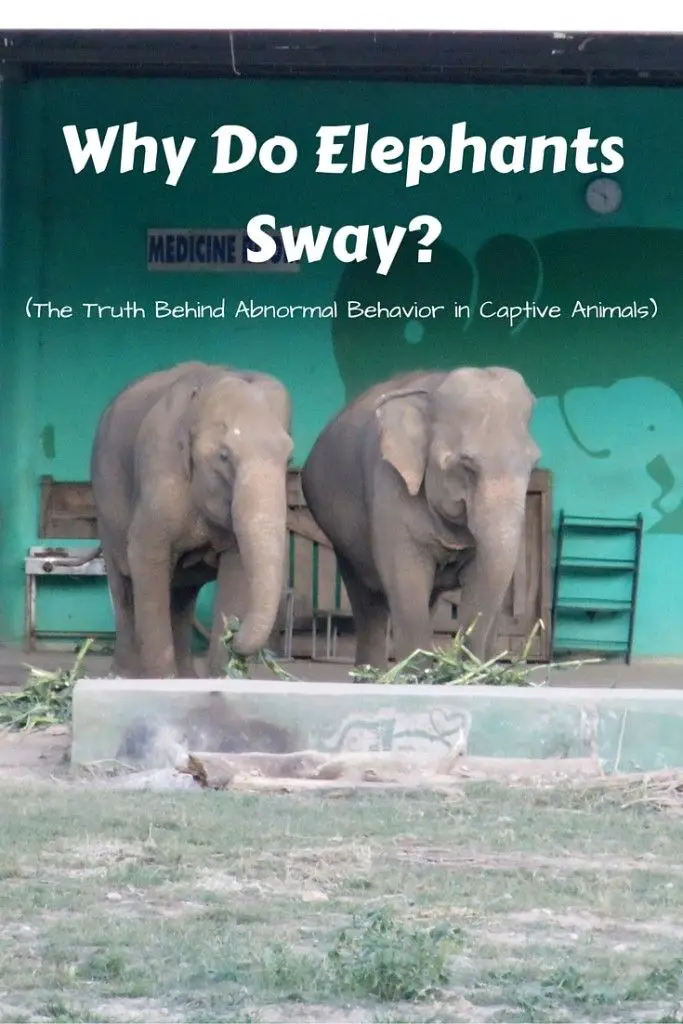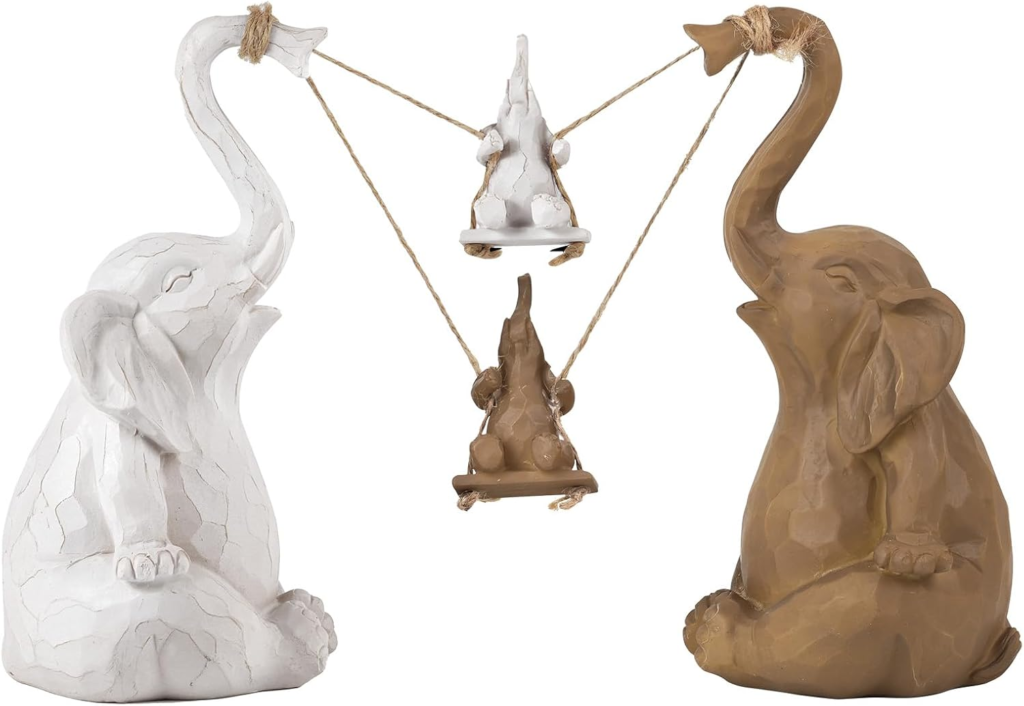Elephants sway primarily for comfort and relaxation. Their massive size puts pressure on their joints and muscles when standing for long periods, and swaying helps relieve discomfort and improve circulation.
Bring luck and charm to your space with this beautifully crafted Elephant Statue. Perfect for home or office decor, it also makes a heartfelt gift for moms and elephant lovers—order yours today!
1. Why Do Elephants Swing Back and Forth?
Elephants may swing back and forth for various reasons, including relaxation, stress relief, or as part of a natural rhythmic movement. In some cases, this behavior is seen in captive elephants due to boredom or lack of mental stimulation.

2. Why Do Elephants Sway Backwards?
Swaying backward is less common than regular swaying but can be observed in elephants that are anxious or uncertain. This movement might be a way to adjust their balance or cope with discomfort in their environment.
3. Normal Behaviors in Elephants
Elephants in the wild engage in a variety of normal behaviors, including:
- Social interactions – They communicate using body language, vocalizations, and touch.
- Foraging – Elephants spend most of their day searching for food.
- Bathing and dusting – They enjoy cooling off in water and covering themselves in mud for protection.
- Playful behavior – Young elephants engage in play-fighting, trunk wrestling, and running.
4. Abnormal Behaviors in Elephants

In captivity, elephants may develop abnormal behaviors due to stress or confinement, such as:
- Excessive swaying or rocking – A sign of boredom, stress, or lack of space.
- Self-harm (e.g., biting or hitting themselves) – Often due to frustration.
- Repetitive head bobbing or pacing – Can indicate psychological distress.
5. Stereotypic Behavior in Zoo Animals
Stereotypic behaviors are repetitive, unnatural actions that animals develop in captivity. In elephants, this includes constant swaying, head bobbing, or pacing. These behaviors often result from inadequate space, social isolation, or lack of environmental enrichment.
6. Why Do Elephants Walk Backwards?
While rare, elephants sometimes walk backward to navigate tight spaces or avoid obstacles. In captivity, this behavior can be linked to discomfort, stress, or poorly designed enclosures.
7. Elephant Behavior Examples
Some fascinating elephant behaviors include:
- Using tools – Elephants use sticks to scratch themselves and leaves as fly swatters.
- Mourning their dead – Elephants show signs of grief and may revisit the bones of deceased herd members.
- Cooperative problem-solving – They work together to overcome challenges, like helping a stuck calf.
8. How Elephants Scratch Their Belly
Elephants use various methods to scratch their bellies, including:
- Rubbing against trees or rocks.
- Using their trunk to reach itchy spots.
- Rolling on the ground to relieve irritation.
Why do elephants sway from side to side?
Elephants sway from side to side for several reasons, depending on their environment and emotional state. Here are the main reasons:
1. To Relieve Pressure on Their Legs and Feet
Elephants are heavy animals, and standing in one place for too long puts stress on their joints. Swaying helps shift their weight from one leg to another, improving blood circulation and reducing discomfort.
2. To Maintain Balance
Swaying can be a natural way for elephants to maintain balance, especially when they are standing still for extended periods. It helps them distribute their weight more evenly.
3. As a Form of Mental Stimulation
In captivity, elephants may sway due to boredom or lack of stimulation. In the wild, they are constantly moving while foraging, socializing, or exploring, but in zoos or enclosures, they may not have enough activity, leading to repetitive behaviors like swaying.
4. As a Response to Stress or Anxiety
Excessive or exaggerated swaying can indicate emotional distress, especially in captive elephants. It is considered a stereotypic behavior, which means it is a repetitive action that develops due to stress, frustration, or confinement.
5. To Communicate or Express Emotion
Some elephants sway as a way to show excitement, anticipation, or relaxation. For example, an elephant may sway when waiting for food or interacting with familiar people or animals.
6. To Repel Insects
Swaying can also be a practical way to keep insects away, especially in hot and humid environments where flies and other pests are common.
Is Swaying Normal or a Sign of Distress?
- In the wild, gentle swaying is usually normal and part of natural movements.
- In captivity, excessive swaying can be a sign of stress or boredom due to lack of space, social interaction, or environmental enrichment.
If an elephant sways continuously in a zoo or sanctuary, it may need more stimulation, social interaction, or a larger space to move naturally.

Credit: en.upali.ch
Frequently Asked Questions On Why Do Elephants Sway
Why Do Elephants Sway Their Bodies?
Elephants sway their bodies as a way to maintain balance and regulate body temperature.
How Do Elephants Use Swaying For Communication?
Elephants use swaying to communicate with other elephants, displaying their emotions and intentions.
What Causes Elephants To Sway Their Trunks?
Elephants sway their trunks to gather information about their surroundings, such as smelling for danger or finding food.
Is Swaying A Sign Of Stress In Elephants?
Swaying can sometimes be a sign of stress in elephants, but it can also be a natural behavior for comfort.
Do Baby Elephants Also Sway?
Yes, baby elephants also sway as they learn from and mimic the behavior of the older elephants in their group.
Can Swaying Help Elephants In Their Daily Activities?
Swaying helps elephants with various activities, such as foraging, drinking water, and even during social interactions.
Are There Any Health Benefits To Swaying For Elephants?
Swaying helps elephants maintain muscle tone, improve blood circulation, and prevent stiffness in their joints.
Conclusion
The swaying behavior of elephants serves multiple purposes. It helps them cool down, maintain balance, communicate with each other, and display dominance or aggression. This natural swaying movement exhibits their powerful presence in the animal kingdom. Understanding the reasons behind an elephant’s sway can deepen our appreciation for these magnificent creatures and their unique ways of navigating their environment.


